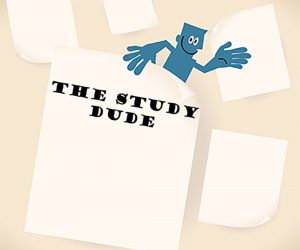 Writing an essay? Use formal tone. Writing a nonfiction book? Use conversational tone. Writing a blog post? Try a snappy tone. But how do you create these tones in the first place?
Writing an essay? Use formal tone. Writing a nonfiction book? Use conversational tone. Writing a blog post? Try a snappy tone. But how do you create these tones in the first place?
Here are seven tidbits for drafting the perfect tone, according to Jennifer Goforth Gregory (2018) in her book Freelance Content Marketing Writer Find your perfect clients, Make tons of money and Build a business you love.
Tidbit #1: Got a fun point of view in you?
“Point of view – I personally think that point of view is one of the biggest choices that determines tone. It’s almost impossible for an article written in third person to feel conversational or a first-person article to be formal. I try to encourage all of my clients to use at least second person because I find it makes a huge difference in the readability as well as the connection to the audience” (Gregory, 2018, 56%).
You always want to write your academic essays in third person (“he,” “she,” “they,” “them”) unless asked to write a reflective essay. Reflective essays depend on first person (“I,” “we,” and “me”). But reflective essays are rare in academia.
In informal writing, I think using “you” is best. In formal writing, resort to “he, she, it, they, and them.” And remember, one point of view is better than two.
Tidbit #2: A great sentence length lasts forever.
“Sentence length – Longer sentences tend to give a more formal tone. If you are aiming for a more conversational or snappy tone, try shorter sentences when possible” (Gregory, 2018, 56%).
Try writing a nonfiction book using mostly short sentences. Chop long sentences in two. By doing so, your book will grow livelier and easier to read.
But in academic writing, longer sentences seem more astute. Just do as my editor recommends and offer breathers: punctuation or periods. What do I mean exactly by breathers? Try reading a super long sentence with no punctuation out loud. You’ll end up gasping for air. So, break up the length with punctuation.
The best writing styles mix together long and short sentences. Saved by varied sentence lengths!
Tidbit #3: Write better through paragraph length.
“Paragraph length – The same is true with paragraphs. Shorter paragraphs tend to convey a less formal tone. I also find that varying paragraph lengths help to create a less formal tone overall” (Gregory, 2018, 56%).
One thing to avoid is a page-long paragraph. One professor said to have at least three paragraphs per page, at bare minimum two. But short paragraphs of two to three sentences don’t cut it for academic papers. Super short paragraphs are best reserved for the Web or for books on copywriting.
Tisbit #4: Word choice inspires.
“Word choice – If you say, ‘Have a chat’ versus ‘Have a conversation,’ these convey two totally different tones. Look throughout the sample piece to find the type of words used and keep it consistent throughout your work” (Gregory, 2018, 56%).
Shorter words are punchy, often lively, and fun to read. Longer words make the writing more formal or academic.
One professor wrote her papers mixing short punchy words with long technical jargon. It made for a delightful combination, although I insisted that grad papers should be more pompous. Little did I know. But good word choice is better than cotton candy.
Tidbit #5: Show the marketing jargon the trash.
“Marketing jargon – I hate marketing jargon. My current pet peeve is the word innovate because if you are using the word innovate (which everyone else currently is using) then you are actually not being innovative. Nothing formalizes a piece of content and removes the connection between the reader and the brand as much as jargon” (Gregory, 2018, 56%).
Academic writing relies on jargon. But if you want a non-expert to understand your paper, then it’s best to limit your jargon.
The worst writing arises in academic papers that use almost entirely multisyllabic words. Some of these multisyllabic words may not be used accurately, either. And these words mostly end up increasing confusion. As my editor once said, writing should yield clarity. Writing marketing jargon is like playing with fire.
Tidbit #6: Em/en dashes – when you just feel like them.
“Em/en dashes – So I might be addicted to em and en dashes. I think that they can make a deliverable much more conversational and easy to read. I use them to set off text, add examples, context and maybe even something funny” (Gregory, 2018, 56%).
I read a psychology book that was stuffed with em dashes. I admit, the em dashes seemed to lower the formality of the book, making the read friendlier.
I asked a professor about em dashes. She said it’s best to use a wide variety of punctuation in your writing. But avoid writing a paper that zeros in on em dashes to the exclusion of all else.
Em/en dashes do leaps for your writing.
Tidbit #7: Sentence structure need not be a sentence.
“Sentence structure – My fifth grade English teacher would not be pleased with me. I LOVE beginning sentences with ‘But’ and ‘And’. I think it makes the deliverable much more conversational and easy to read. I also think that occasionally using a short question or sentence fragment can be very effective to conveying a specific tone” (Gregory, 2018, 56%).
Bestselling nonfiction books make good use of sentence fragments, I’ve noticed. The goal for nonfiction seems to centre around clarity. So, the authors aim to write in a conversational tone.
If you ever eavesdrop at Starbucks, try to listen to the structure of chit chats. What you discover may surprise you. Next to none of it is grammatically sound. Good sentence structure soothes the soul.
Those are seven tidbits for writing with tone. Do you prefer the formal, conversational, or punchy? Test each out to find where you most shine.

